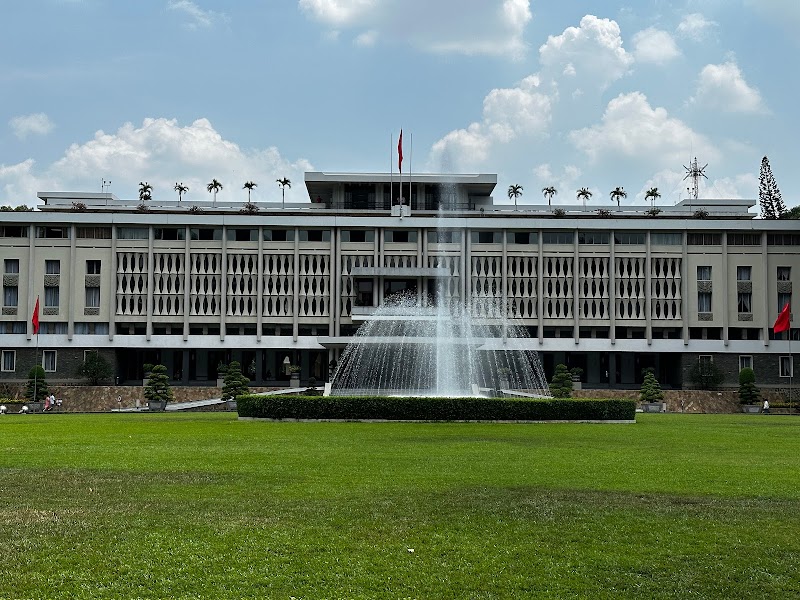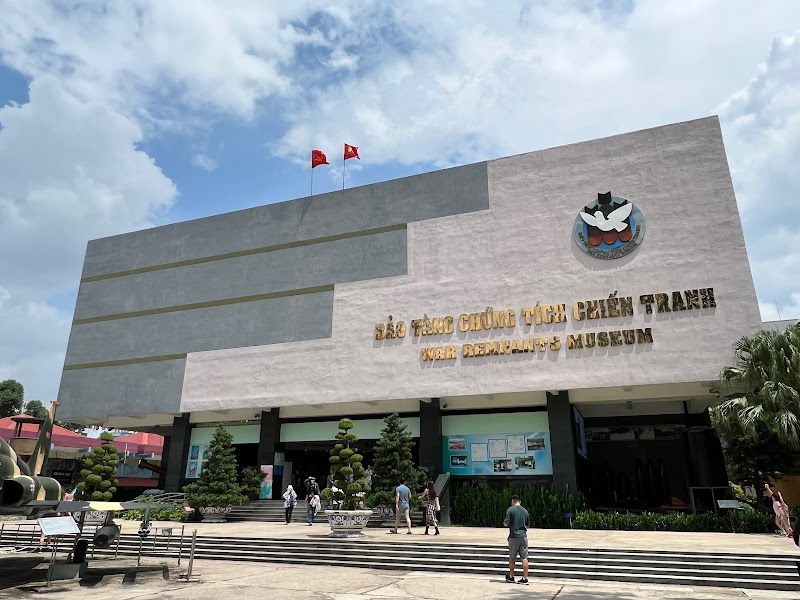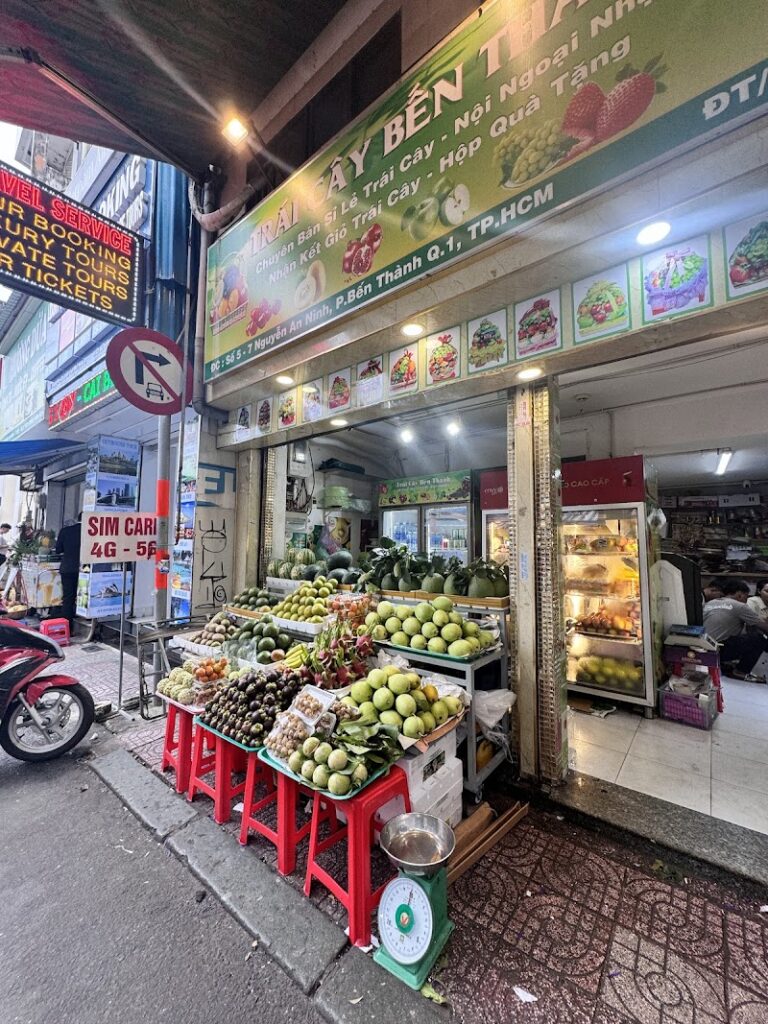Welcome to Ho Chi Minh City, Vietnam
Are you aware that Ho Chi Minh City, accommodating over 9 million inhabitants, is Vietnam's largest city and its economic powerhouse? This vibrant metropolis, formerly recognized as Saigon, beautifully blends the old and the new, where timeless temples and colonial structures coincide with towering skyscrapers. From the bustling Ben Thanh Market to the historical War Remnants Museum and the awe-inspiring Notre-Dame Cathedral Basilica of Saigon, each city corner narrates a unique tale of its rich legacy.
Begin your adventure in Ho Chi Minh City can be quite daunting, considering its size and diversity. A well-detailed tourist Map of the South of Vietnam can act as your navigational tool in this dynamic city, guiding you through its maze of narrow streets and hidden alleys. It unveils the city's iconic landmarks and hidden treasures, allowing you to customize your journey according to your interests and preferences.
Booking.comUnveiling the Charms of Ho Chi Minh City
Regarded as Vietnam's vibrant heart, Ho Chi Minh City thrives on an energy that emerges from a harmonious fusion of historical richness and modernity. Here's a sneak peek into some of the city's most captivating attractions that will mark your starting point for exploration. For a more thorough journey, consider using the tourist map of Hanoi, Vietnam.
Cu Chi Tunnels: A Dive into History
Top on your list must be the Cu Chi Tunnels, an extensive network of underground passages that played a crucial role as a lifeline for Vietnamese soldiers during the Vietnam War. This intricate system, which once housed living areas, hospitals, and storage facilities, offers a deep understanding of the resilience and resourcefulness of the Vietnamese people.
Reunification Palace: A Symbol of the Past
Next, venture to the Reunification Palace, where the architecture and furnishings have been preserved as they were in 1975, thereby creating a time capsule that encapsulates the final days of the South Vietnamese regime. The palace's historical significance and excellent preservation make it a must-visit for any history enthusiast.
Cholon: The Vibrant Chinatown
Submerge yourself in the festive streets of Cholon, Ho Chi Minh's lively Chinatown. Here, the Thien Hau Temple, adorned with intricate porcelain figurines dedicated to the sea goddess Thien Hau, stands out. Cholon is also home to Binh Tay Market, a less touristy alternative to the Ben Thanh Market, providing an authentic Vietnamese market experience.
The Enigmatic Jade Emperor Pagoda
Visit the Jade Emperor Pagoda, one of the most noteworthy Taoist temples in Vietnam. Its smoky interior, brimming with statues of mythical deities and grotesque demons, offers a glimpse into the spiritual beliefs of the Vietnamese people. The temple's mystical ambiance differentiates it from other attractions in the city.
Bitexco Financial Tower: The Modern Giant
Close your tour with a trip to the Bitexco Financial Tower, a modern architectural wonder that provides a panoramic city view from its Sky Deck. As you overlook the city's skyline from this height, you'll comprehend the fascinating amalgamation of traditional and modern elements that characterize the uniqueness of Ho Chi Minh City.

Practical Information for Ho Chi Minh City
Transportation and Mobility
Ho Chi Minh City boasts an extensive and efficient public transportation system. The city's buses, operated by SaigonBus, are a popular choice for both locals and tourists. A one-way ticket costs approximately 5,000-10,000 VND (around $0.22-$0.44), depending on the distance.
Taxis are also readily available, but ensure to choose a reputable company like Mai Linh or Vinasun to avoid potential scams. The average fare is around 15,000 VND per km (about $0.65).
For a unique and local experience, consider hiring a motorbike taxi, or "xe om". Fares are negotiable, but usually fall between 10,000-15,000 VND per km.
Schedules and Prices
Most museums and attractions in Ho Chi Minh City open around 7:30-8:00 am and close between 4:00-5:00 pm. It's best to check the official websites for the most accurate and up-to-date information.
Entrance fees vary, but most museums and historical sites charge between 10,000-40,000 VND (approximately $0.44-$1.75). Many attractions offer discounted rates for students and children.
Safety Tips
While Ho Chi Minh City is generally safe, like any major city, it's important to stay alert. Be cautious of pickpockets in crowded areas, secure your belongings, and avoid displaying expensive items.
When crossing roads, exercise caution as the city's traffic can be chaotic. Always cross at designated pedestrian crossings, and follow the locals' lead when unsure.
Practical Recommendations
The ideal time to visit Ho Chi Minh City is during the dry season, from December to April. During this period, the city experiences fewer rainfall and more sunny days, making it perfect for outdoor exploration.
Remember to dress respectfully, especially when visiting religious sites. Shoulders and knees should be covered, and removing shoes is often required.
Lastly, don't miss out on sampling the city's renowned street food. From Pho to Banh Mi, these delicious and affordable dishes are an integral part of the Ho Chi Minh City experience.

Frequently Asked Questions
1. What unique experiences can I seek in Ho Chi Minh City?
Ho Chi Minh City offers a plethora of unique experiences, from exploring the vibrant nightlife to participating in a Vietnamese cooking class. For a different perspective of the city, consider hopping on a leisurely river cruise on the Saigon River. If you're a food enthusiast, don't miss the opportunity to join a street food tour to taste local specialties or enroll in a Vietnamese cooking class to learn how to prepare traditional dishes.
2. Are there any specific etiquette rules I should be aware of?
Respecting local customs and traditions is an essential part of traveling. In Ho Chi Minh City, it's considered polite to remove your shoes before entering someone's home or a religious site. Public displays of affection are generally frowned upon, especially in temples and pagodas. It's also a good practice to ask for permission before taking photographs of locals.
3. What's the coffee culture like in Ho Chi Minh City?
Ho Chi Minh City has a flourishing coffee culture, offering a unique blend of traditional Vietnamese and contemporary Western-style coffee shops. You can sample the famous Vietnamese iced coffee, known as ca phe sua da, or explore trendy cafes serving artisan brews. District 1 and District 3 are known for their bustling coffee scenes.
4. What's the nightlife like in Ho Chi Minh City?
Ho Chi Minh City boasts a vibrant nightlife scene, with options ranging from rooftop bars offering panoramic city views to bustling night markets. Try Bui Vien Street for a lively backpacker scene, or head to the posh rooftop bars on Dong Khoi Street for a sophisticated night out. For a more local experience, explore the night markets in Hue, Vietnam for street food and shopping.
5. Are there any outdoor activities in and around Ho Chi Minh City?
Yes, Ho Chi Minh City and its surroundings offer several outdoor activities for nature and adventure lovers. You can visit the Can Gio Mangrove Biosphere Reserve for a day of exploring mangrove forests, or head to the Mekong Delta for a boat tour. For trekking enthusiasts, the Black Virgin Mountain is an excellent choice.
6. Can I rent a motorbike to explore the city?
Renting a motorbike is a popular way to explore Ho Chi Minh City, but it is recommended only for experienced riders due to the city's hectic traffic. Be sure to wear a helmet and understand local traffic rules before hitting the road. If you're not confident on a bike, consider hiring a motorbike taxi, known as xe om, for a guided tour around the city.

